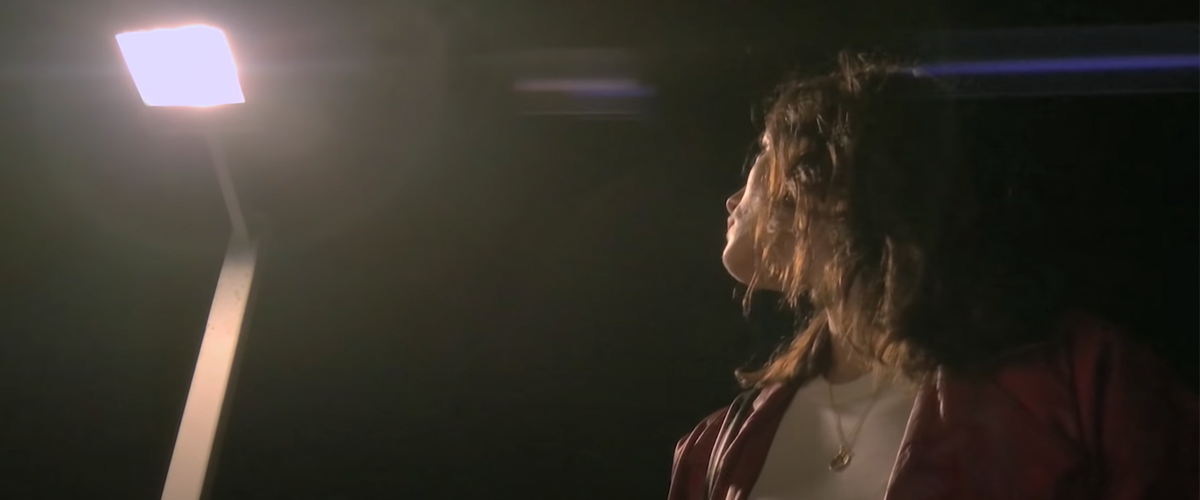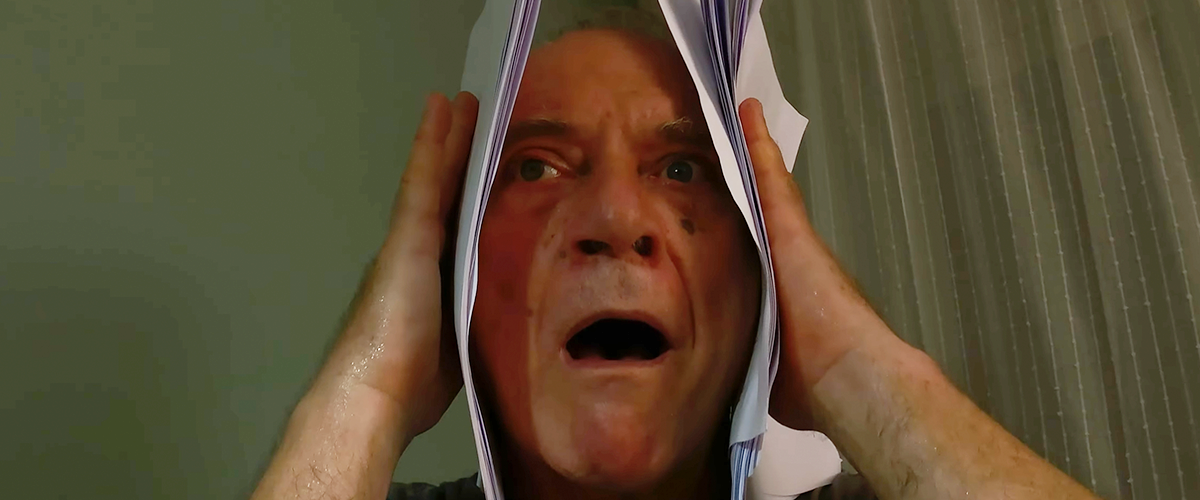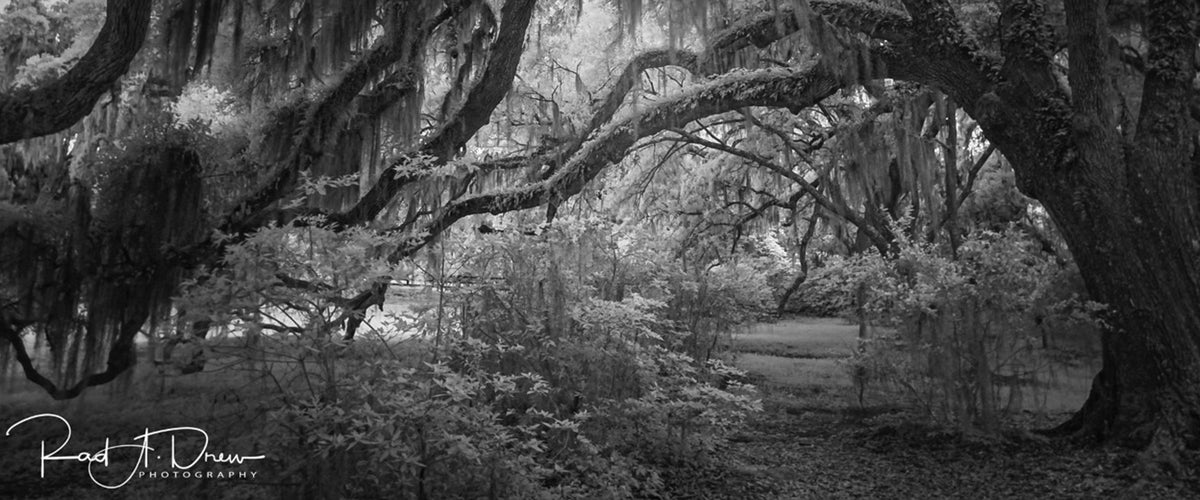Ghost
Since losing his father a few years ago, producer/director Anthony Z James felt compelled to tell a story about their relationship through the lens of a gritty crime drama, the kind of movie his father loved most. The result is Ghost: a character-driven film featuring strong performances paired with uninterrupted, cinematic shots. It's the life story of an ex-con’s first day out of prison, as he tries to assimilate back into society and reconnect with his estranged son.
Anthony was kind enough to give the Moondog Labs community a behind-the-scenes look into his filmmaking process in a meet-the-director interview:
MDL: Tell us a little about yourself, creatively.
MDL: What prompted you to create Ghost? Where did your concept come from?
AZJ: My father used to love watching crime dramas and ever since he passed away I had an urge to tell a story about my relationship with him through a lens of that genre. The first attempt to tackle it was a 15 min short Day One, and together with the lead actor Anthony Mark Streeter we created a very compelling main character - this grizzled ex-boxer with a very rough exterior, but some sort of genuine human warmth shining through the cracks. I felt it would be a shame not to explore this theme further, leading us to take the natural next step in the shape of a feature.
MDL: Tell us about your creative process in pre-production.
AZJ: Various segments of the story were floating in my head for years, and following the decision to do the feature I spent a couple of months putting it all together in a form of sticky notes on a whiteboard. My planning consisted of many colour-coded scribbles for scenes or key moments - such as red for dramatic beats or green for peaceful passages. Inspired by the mumblecore movement, we made a decision to use a lot of improvisation, so instead of a traditional 90-page script, I ended up with a detailed treatment. It had the whole story with all the scenes and character arches solidly planned out. We then conversed a lot with the actors creating rich character backgrounds and testing their motivations to make sure the narrative was really tight, allowing us to be more playful with the dialogues.
MDL: What were your essential pieces of hardware during production?
AZJ: The basis was two iPhone 8 handsets - we had to use a couple in rotation as they would overheat pretty quickly and it sped up the DIT file transfer process. Also, some dialogue scenes with more traditional coverage (Close-Up/Over Shoulder shots) required both iPhones running at the same time to allow cast improvisation.
FiLMiC Pro app was essential as it allowed us to set exposure and color balance, which wouldn't be possible using a regular iPhone camera app. It also recorded the material in 4K resolution and at a cinematic 24fps rate. Hand-held is pretty much impossible with a smartphone as the lens is so small in this light body, so every bit of tremble translates into a drastic, aesthetically unpleasant shake. This problem was solved by using DJI Osmo Mobile gimbal, which, once I got used to it, was so easy to operate, that we used it in both moving and static shots instead of a tripod, allowing us instant flexibility and fluid creativity adapting to actors' movement. The exteriors were shot with natural light and interiors with mostly practical lighting. We had a genius gaffer available for a lot of the shooting time, who was able to squeeze the most out of any lighting situation with really bare-minimum equipment, such as two small LEDs, reflector and some tin foil.
Moondog Labs lens was also key in creating the look for Ghost - anamorphic brings a very strong visual aesthetic, which doesn't always suit the social-realism kind of vibe we were going for, but an iPhone is so far on the other side of the spectrum, that in order to get any kind of resemblance of a cinematic look, one must push it the other way as far as possible. Based on my research, Moondog Labs was the only way to go, however, no such lenses were available in the UK at the time and the latest model available online was for iPhone 7. Adamant to use a Moondog lens, I reached out to the HQ in New York and the team there was very helpful in sending over the lens for iPhone 8. We were very happy with the quality and ordered a second one, just to be safe.
Knowing that the audiences can accept more unorthodox visuals only if the sound is really professional, we hired a location sound mixer, who recorded on Sennheiser ME66 Shotgun and two EX100 radio mics. We also did some ADR on the surprisingly capable iPhone 8.
MDL: Tell us about your production process.
AZJ: The shoot took 2 weeks with some extra pick-up days afterwards. The nimble camera set-up and ability to cover many scenes in long single takes allowed us to cover approximately two scenes per day. One particularly complicated sequence required two days to shoot, but most of the time there was a morning scene and an afternoon scene. Often we had to travel to the other side of the vast metropolis of London in between, but generally I'd say it was rather well planned out - our schedule was arranged by a very experienced 1st AD and our brilliant line producer held the occasionally wayward set together, moving along at a very reasonable pace. Whilst there may not have been time or space for perfectionism, keeping an eye on the overall logic, meaning and mood of the picture remained a priority all the way through.
AZJ: There are very different and conflicting methods, but based on my personal experience, I'd say spend as much time as possible on the cast - selecting the right people, and working together to build solid backgrounds for the characters. Once actors are 100% clear on what is supposed to be going on in the fictional life of the person they embody, they are able to bring out those genuine emotional beats and carry the right message through the lens.
MDL: What software did you use in post-production? What was that process like?
AZJ: Ghost was edited on DaVinci Resolve 15, which is actually free and supported our bare-bones, DYI, available-for-everyone approach. I edited it myself, so it was relatively straightforward. The key challenge creatively was maintaining a good visual rhythm when you have almost no variation is shot sizes. The biggest hurdle was cutting some heavily improvised dialogue scenes as all the takes ended up being significantly different. One of the scenes appears quite simple, but I almost went mad putting it together. It was also very exciting to see the story take shape and the rough cut was ready after two months. However, all the other post-production took much longer.
I learned that getting people excited to show up for a day or even a week on set is incomparable to agreeing with someone to lock themselves up with your feature for a month or three. This is how long proper sound design & mixing or color grading takes, so without us being able to offer a rate anywhere close to the usual, post-production pros shone away from it like the plague. We had a wonderful music composer and VFX artist who did marvelous work and the film would be much worse without them. However, the sound design, mix, and color grade had to be done by myself and the only goal was to get it to the basic level where it doesn't take you away from following the story.
To test the final master export, we played a 2K DCP at a 500-seat commercial cinema and received no complaints from the audience concerning the sound or image quality.
MDL: Any other hacks or advice for other indie filmmakers?
AZJ: Probably my main advice would be to just go and do it - shoot your film on whatever camera you can get your hands on. These days companies like Moondog Labs enable transforming your everyday mobile phone to a storytelling tool. Since university, I felt held back by a lack of substantial budget or availability of major acting talent, but nowadays it is actually possible to make a film and release it to worldwide audiences without the approval of some obscure gatekeepers.
MDL: What's next for you creatively?
AZJ: I'd love to continue exploring other techniques and genres. Ghost just got released on Amazon Prime and Vimeo On Demand, so I'm learning about the journey of a no-budget indie film after it sees the light of day. Then I'll probably go on and attempt to make another. It should only get easier, right?:)





